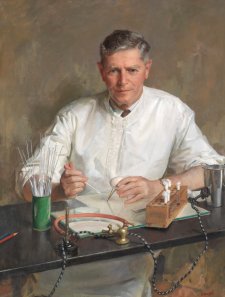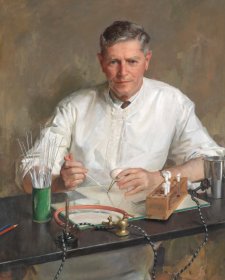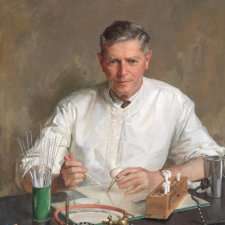William Strutt arrived in Melbourne in 1850 having undertaken his training in art in Paris in the late 1830s. Born into a family of artists, he soon found work as an illustrator for pictorial newspapers and, through friends such as John Pascoe Fawkner, later earned commissions for portraits and history paintings. His visit to Ballarat in 1851 resulted in a number of depictions of goldfields life, some of which were later lithographed; and in 1854, three of his portraits (including one of Fawkner) were included in the Melbourne Exhibition. Returning to Victoria after two years in New Zealand, he helped establish the Victorian Society of Fine Arts and completed further portrait commissions between 1858 and 1860. That year, he commenced the first of his now-famous depictions of the Victorian Exploring Expedition, sketching the expedition preparations, making studies of its departure from Royal Park, and creating a number of pencil portraits of expedition members including Robert O’Hara Burke, William Wills, Ludwig Becker, George Landells, and the Afghan cameleers. In 1862, just before his departure for England, he completed his famous posthumous painting of Burke; the expedition later inspired further works, including the 1911 painting, The burial of Burke. Amongst the many historical paintings he produced on his return to England are Black Thursday, February 6th 1851 (1864, State Library of Victoria) and Bushrangers, Victoria, Australia 1852 (c. 1887, University of Melbourne). Strutt exhibited regularly at the Royal Academy between 1865 and 1893 and was elected a member of the Royal Society of British Artists. Works by Strutt reside in a number of Australian collections, most notably those of the State Libraries of New South Wales and Victoria, the Parliamentary Library of Victoria and the National Library of Australia.







